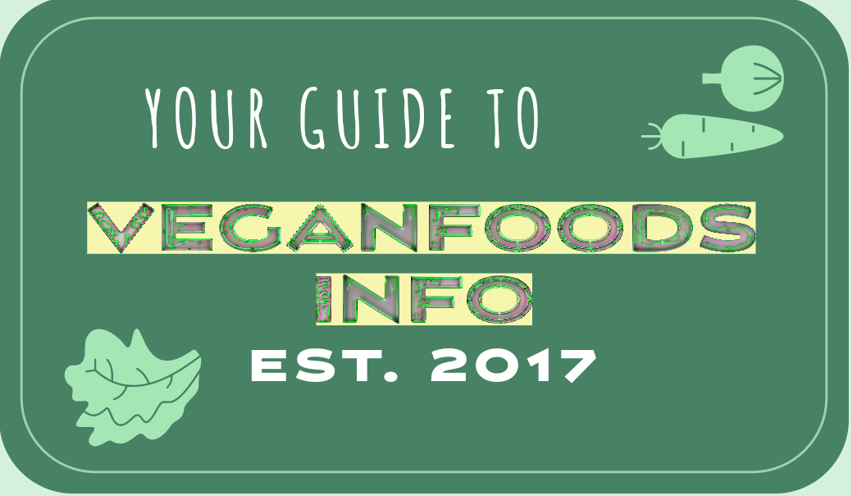Welcome to a world where sustainability is becoming more crucial than ever. Sustainable living is more than just a trend or buzzword; it is a lifestyle choice that promotes a greener future. By adopting eco-friendly practices, we can reduce carbon footprint, conserve natural resources, and promote a healthier planet for generations to come. In this article, we will explore sustainable living practices, renewable energy sources, zero waste living, and ethical consumption. Let’s get started.
Key Takeaways
- Sustainable living is a lifestyle choice that promotes a greener future.
- Adopting eco-friendly practices can reduce carbon footprint, conserve natural resources, and promote a healthier planet.
Embracing Sustainable Practices
Living a sustainable lifestyle is not just about protecting the environment, it also promotes personal health and wellness. Incorporating sustainable practices into your daily routine is easier than you might think and can help you save money and reduce your carbon footprint.
Reduce Energy Consumption
One of the easiest ways to reduce your environmental impact is to minimize energy consumption. Simple actions like turning off lights and unplugging electronics when not in use can make a big difference. Consider using energy-efficient light bulbs, turning down your thermostat and washing your clothes in cold water to further reduce energy use.
Conserve Water
Water is a precious resource, and it’s essential to conserve it wherever possible. Fix leaky faucets, take shorter showers, and consider installing low-flow showerheads and toilets. Additionally, use a broom instead of a hose to clean outdoor areas and collect rainwater for watering indoor and outdoor plants.
Minimize Waste
Reducing waste is a crucial aspect of sustainable living. Start by carrying a reusable water bottle, coffee cup, and shopping bags. Avoid single-use plastics like straws, utensils, and food containers. Invest in durable items that will last longer, such as glass containers and cloth napkins. Composting food scraps and yard waste is another way to reduce waste and create nutrient-rich soil for gardening.

Choose Sustainable Products
Choosing sustainable products is another way to promote sustainable living. Look for eco-friendly certifications such as Fair Trade, USDA Organic, and Forest Stewardship Council (FSC) when shopping. Consider buying goods locally produced or made with natural, renewable materials. Finally, give preference to products with minimal packaging and sustainable disposal options.
Embracing sustainable practices can feel overwhelming at first, but remember that every small action makes a difference. Start with one or two changes and build from there. With time, these conscious choices will become second nature, and you’ll be living a more sustainable and eco-friendly lifestyle in no time.
Renewable Energy: Powering a Sustainable Future
As the world continues to face the challenges of climate change, transitioning to renewable energy sources has become increasingly important in promoting sustainable living. Renewable energy is energy generated from natural resources that are replenished over time. These resources include solar, wind, geothermal, hydro, and biomass energy.
Renewable energy sources offer several benefits compared to traditional fossil fuels. They do not release harmful pollutants into the environment, reducing the negative impact on air and water quality. They are also more sustainable in the long run, as they are not finite and will not run out like fossil fuels.
One of the most popular forms of renewable energy is solar power. Solar panels convert sunlight into electricity and can be installed on rooftops or in large solar farms. Wind power is another rapidly growing form of renewable energy. Wind turbines generate electricity by harnessing the power of wind and can be installed on land or offshore.

Other forms of renewable energy include geothermal, which generates energy from the earth’s heat, hydroelectric, which generates energy from flowing water, and biomass, which uses organic materials like wood chips and agricultural waste to produce energy.
Transitioning to renewable energy sources has numerous benefits, including reducing carbon emissions and combating climate change. Many governments and businesses around the world are investing in renewable energy initiatives to reduce their carbon footprint and create a more sustainable future.
Zero Waste Living: Minimizing Environmental Impact
Zero waste living is a lifestyle that prioritizes minimizing waste and reducing environmental impact. By adopting a circular economy mindset, individuals can find new ways to reduce, reuse, and recycle, rather than relying on single-use products that contribute to landfills and pollution.
There are many practical tips for reducing waste in daily life. One of the easiest ways to get started is by composting food waste and organic materials, which can be used as fertilizer for gardens or plants. Another way to minimize waste is by recycling, which can be done in most cities and municipalities. Individuals can also repurpose items and give them a new life, such as turning old clothes into rags or using glass jars for storage.
It’s important to be mindful of consumption and choose products that are sustainable and eco-friendly. This includes purchasing items made from natural materials, such as bamboo or cotton, or opting for products made from recycled materials. Additionally, choosing products with minimal packaging or packaging that can be reused can help reduce waste in the long run.
| Tip | Description |
|---|---|
| Shop at Thrift Stores | Buying secondhand goods not only helps reduce waste but also supports local charities and promotes reuse. |
| Invest in Reusable Products | Items such as reusable bags, water bottles, and coffee cups can help reduce waste and save money in the long run. |
| Buy in Bulk | Purchasing items in bulk reduces the amount of packaging waste and can save money on individual products. |
By embracing zero waste living and making conscious choices, individuals can contribute to a more sustainable future and reduce their carbon footprint. As Lauren Singer, founder of the blog Trash Is For Tossers, says, “We don’t need a handful of people doing zero waste perfectly. We need millions of people doing it imperfectly.”

Sustainable Products: Making Ethical Choices
Choosing sustainable products is a crucial step towards promoting an eco-friendly lifestyle. By opting for sustainable alternatives, we can reduce our carbon footprint and contribute to a greener future.
What are sustainable products?
Sustainable products are those that have been manufactured with minimal negative impact on the environment and society. They are often made from renewable or recycled materials and are produced using ethical labor practices. Furthermore, they are designed to minimize waste and can be recycled or repurposed at the end of their lifecycle.
How to identify sustainable products
Look for eco-certifications such as Forest Stewardship Council (FSC) or Cradle to Cradle (C2C) certifications that ensure the sustainability and ethical production of the product. Additionally, consider the materials used in the product’s manufacturing and look for recycled or renewable materials. Finally, opt for products that have been produced using fair-trade practices, ensuring that workers involved in the manufacturing process were treated fairly.
Sustainable product alternatives
| Category | Sustainable Products |
|---|---|
| Fashion |
|
| Beauty |
|
| Household goods |
|
By choosing sustainable products, we can make conscious choices that contribute to a more eco-friendly lifestyle. Let’s embrace sustainable practices and make a positive impact on the environment and society.

Sustainable Living: Tips, Tricks, and Benefits for Eco-Friendly Life
By adopting sustainable practices, we can make a positive impact on the environment and create a greener future. Living a sustainable life is not only beneficial for the planet, but it can also improve our health and well-being. Here are some tips and tricks for embracing sustainable living:
Reduce Energy Consumption
One of the easiest ways to reduce our carbon footprint is by minimizing our energy consumption. We can turn off lights and appliances when not in use, upgrade to energy-efficient light bulbs, and unplug electronics when not in use. Consider using natural light as much as possible, or using a timer switch to control lighting.
Conserve Water
Water is a precious resource, and we can conserve it by taking shorter showers, fixing leaks, and using water-efficient appliances. We can also collect rainwater for outdoor use and use a water filtration system instead of buying bottled water.
Minimize Waste
Reducing waste is a crucial aspect of sustainable living. We can reduce our waste by composting, recycling, and repurposing. Consider using reusable bags, containers, and water bottles instead of disposable ones, and choose products with minimal packaging.
Choose Renewable Energy
Transitioning to renewable energy sources is a significant step towards sustainable living. We can install solar panels or wind turbines, or choose to purchase renewable energy from a supplier. This not only reduces our carbon footprint, but it also saves us money in the long run.
Make Ethical Choices
Choosing sustainable products is another way to make a positive impact on the environment. We can look for eco-certifications, ethical sourcing, and fair-trade practices when purchasing products. Consider investing in sustainable fashion, beauty, and household goods that are made from natural materials and have a minimal impact on the environment.
Conclusion
Sustainable living is not just a trend, it is a necessity for creating a better world. By making small changes in our daily lives, we can contribute to a greener future. Let’s embrace sustainable practices and make conscious choices that promote an eco-friendly lifestyle.
FAQ
Q: What is sustainable living?
A: Sustainable living refers to adopting practices and making lifestyle choices that have minimal negative impact on the environment. It involves reducing waste, conserving resources, and choosing eco-friendly alternatives.
Q: Why is sustainable living important?
A: Sustainable living is important because it helps protect the environment, conserve resources, and reduce carbon emissions. By embracing sustainable practices, we can create a more eco-friendly future for generations to come.
Q: How can I incorporate sustainable practices into my daily life?
A: There are many ways to incorporate sustainable practices into your daily life. Some simple changes you can make include reducing energy consumption, conserving water, and minimizing waste. Choose sustainable products and adopt conscious consumption habits.
Q: What are renewable energy sources?
A: Renewable energy sources are natural resources that can be replenished, such as solar and wind power. These sources of energy produce little to no carbon emissions and are a sustainable alternative to fossil fuels.
Q: How can I reduce waste and practice zero waste living?
A: To reduce waste and practice zero waste living, you can start by composting organic waste, recycling properly, and repurposing items. It’s also important to be mindful of your consumption and aim to eliminate single-use plastics and unnecessary packaging.
Q: How do I choose sustainable products?
A: When choosing sustainable products, look for eco-certifications, ethical sourcing practices, and fair-trade certifications. Consider the materials used, the manufacturing process, and the product’s lifecycle. There are sustainable alternatives available in various categories, such as fashion, beauty, and household goods.

